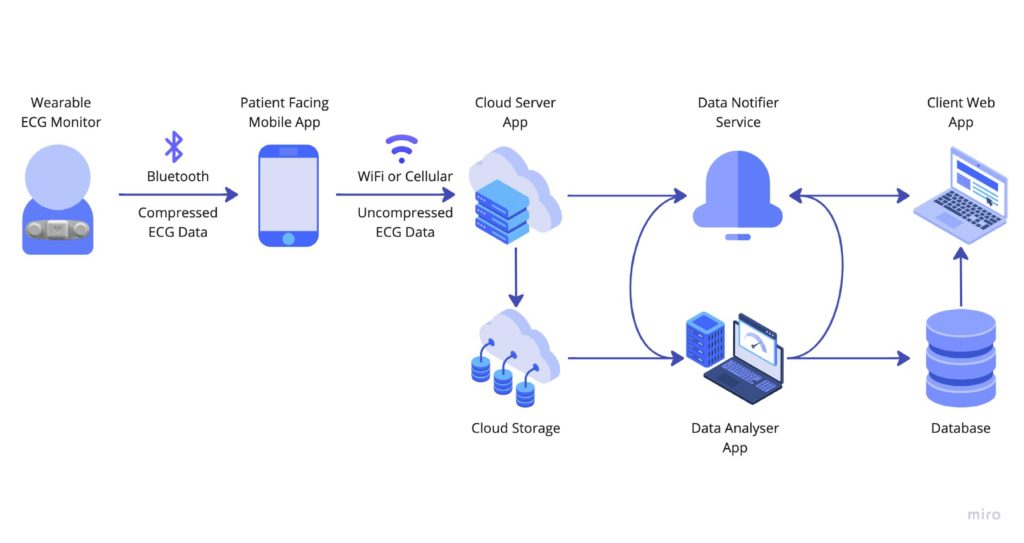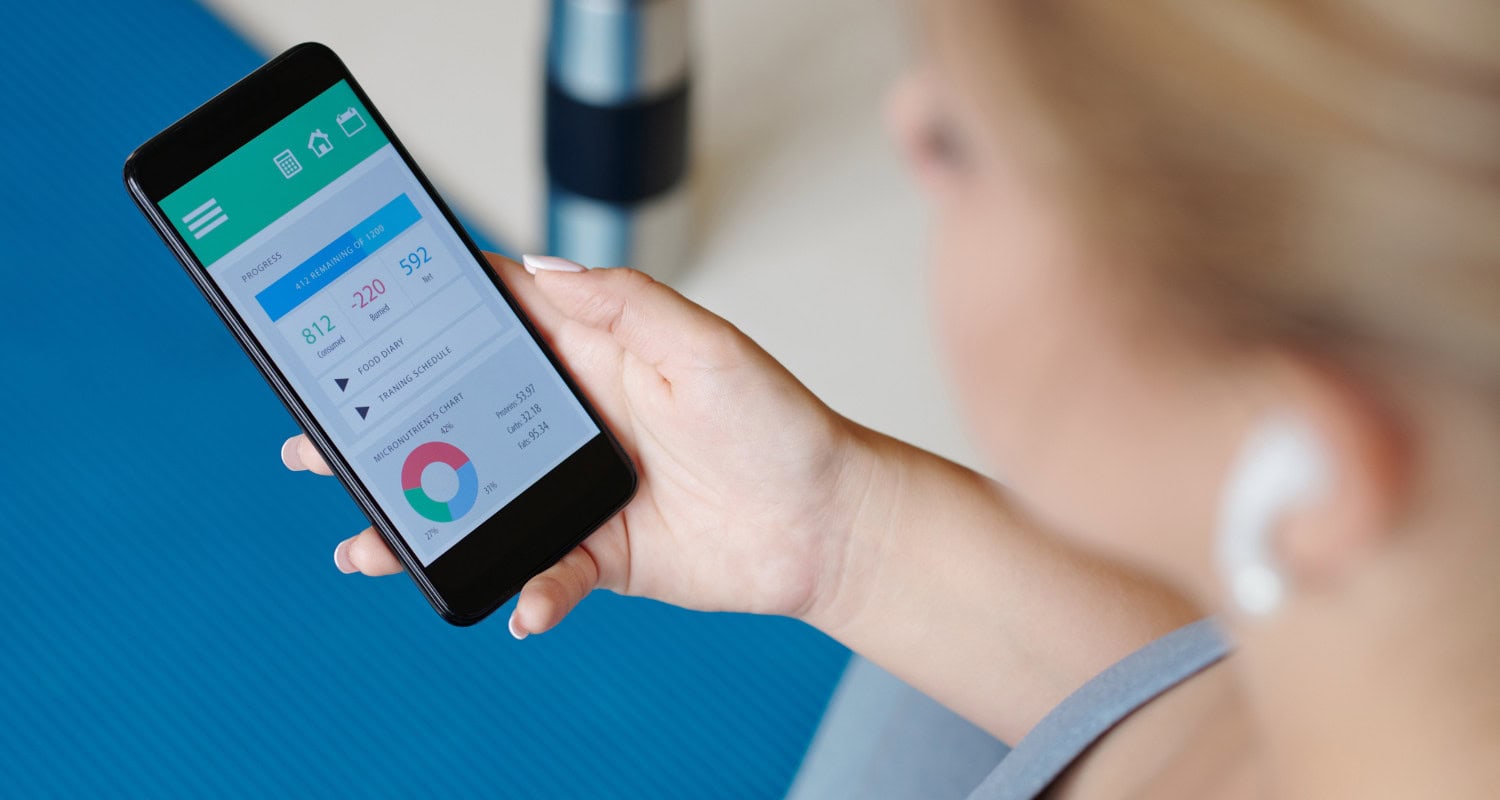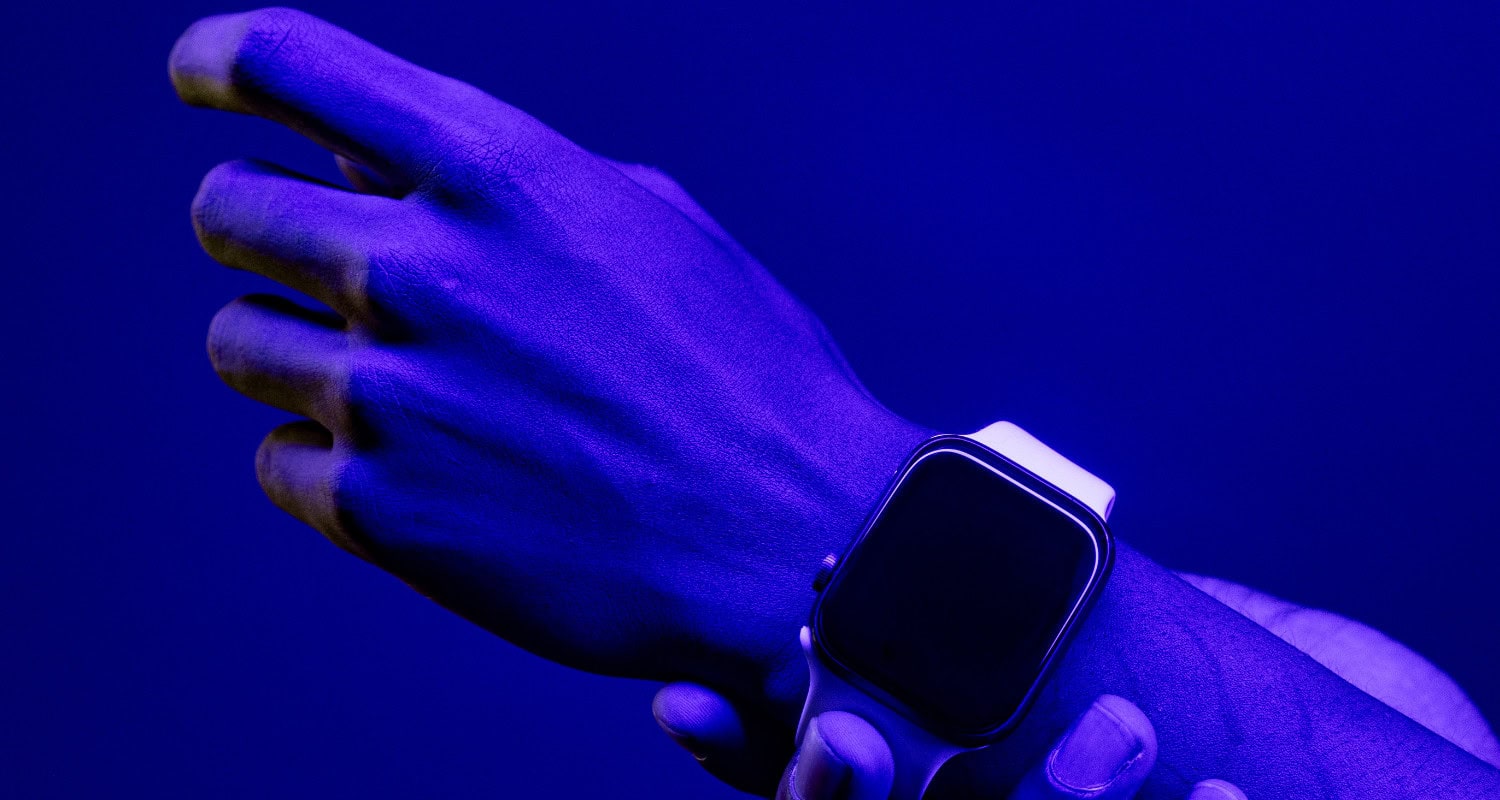The healthcare game is changing fast. Thanks to new tech, supporting patients remotely is easier than ever and is moving healthcare from just reacting to problems to preventing them. With advanced health platforms, remote patient monitoring (RPM) tracks patient’s vital signs around the clock, giving doctors and care teams real-time health insights.
RPM is grabbing attention everywhere in healthcare. Large medical facilities and small practices are considering adopting this innovative technology due to remote patient monitoring benefits.
In this article, we’re looking into RPM’s upsides and downsides to show how it could reshape healthcare and improve patient results.
The Benefits of Remote Patient Monitoring
With remote patient monitoring, you’re not just adopting a novel technology; you’re investing in a future where healthcare is easily available, efficient, and personalized. The benefits of remote patient monitoring in the healthcare industry extend beyond convenience. It transforms care, making it more accessible regardless of patients’ location.
A systematic review of the benefits of remote monitoring has proven that it increases patient satisfaction through more flexible care options, helps to organize workflows, and reduces costs.
With RPM, healthcare teams can redistribute resources more effectively, focusing on patients who need immediate attention while still maintaining oversight of those who are stable.
Improved Patient Outcomes
The benefits of Remote Patient Monitoring include improved treatment outcomes. With RPM’s continuous monitoring, healthcare teams can spot and respond to warning signs right away. It helps catch issues early and prevent full-blown health crises. 84% of healthcare providers confirm that RPM benefits patient outcomes.
Enhanced Patient Engagement and Personalized Care
RPM also brings patients into the driver’s seat, giving them greater control and responsibility over their health. Patients can manage their health more actively by seeing their health data in real-time. Plus, hospitals can customize care to each patient’s unique needs thanks to the real-time health data RPM devices gather. If powered with AI capabilities, a remote patient monitoring device will also provide personalized recommendations and health insights to patients wearing it.
Lower Healthcare Costs
RPM can significantly decrease healthcare expenses for medical facilities and patients. According to recent data, RPM adoption resulted in lower readmission rates and a 72% cost decrease – from $129,480 to $36,914 in total charges. By lowering the need for in-person visits, RPM frees up resources and streamlines healthcare services. People get quality care from home, while healthcare teams only supervise the process and intervene when necessary.
Reduced Workload on Medical Staff
One of the notable benefits of remote patient monitoring is that it reduces the workload on healthcare professionals. With RPM automatically collecting data and giving instant insights, medical staff can zero in on the cases that need urgent attention instead of constantly monitoring everyone. This smoother, faster process means the efficiency of healthcare operations increases, and more people can get timely help.
Improved Access to Care
RPM opens doors to healthcare, breaking down location barriers so patients can get the care they need from anywhere. For those in underserved communities, RPM and telehealth bring quality care within their reach, creating fair access for all. Since the patient-to-primary care physician ratio is lower in rural areas, remote monitoring can be a savior.
Learn more in Top 10 Benefits of Remote Patient Monitoring and Telehealth
How to Maximize Remote Patient Monitoring Benefits With Telehealth and What Components You Need to Connect
Telemedicine providers can integrate RPM with telehealth services to maximize the benefits of remote patient monitoring. Telehealth enables doctors to consult patients remotely, making it simple to stay connected. Using RPM with telehealth means patients get continuous and instant support – no matter where they live.
Telehealth has a lot to offer, from video calls and virtual check-ins to e-visits, making it a great match for RPM integration. Patients can connect with their healthcare specialists from their homes, avoiding unnecessary in-person visits. They become active players in their own care, which leads to better results and higher satisfaction.
Key Components of Using RPM Systems With Telehealth
When remote patient monitoring teams up with telehealth, the possibilities for patient care expand dramatically. Medical staff can not only gather patient data remotely but also connect with patients anytime to provide consulting and check on them.
But what are the essential pieces that make this integration work?
| Connected Medical Devices |
| You need medical devices that can collect relevant health data from targeted patients remotely. These can be wearable fitness trackers, blood pressure monitors, glucometers, pulse oximeters, weight scales, thermometers, etc. The device type depends on the health condition you need to monitor. |
| RPM Solution |
| An RPM platform or software that allows you to collect, manage, and analyze health data efficiently. Look for a system that can integrate with your existing electronic health record (EHR) or electronic medical record (EMR) software. |
| Telehealth Software |
| Telehealth software connects patients and providers, enabling video calls, messaging, remote checks, appointment scheduling, and prescribing and managing medicines. Patients can talk to clinicians online to get instant help and guidance. |
| Data Security and Privacy Measures |
| Privacy measures allow you to comply with regulations and reassure patients that their data is safe. Security measures, such as end-to-end encryption, help protect sensitive health data during transmission. Regular security audits can identify vulnerabilities before they become a huge issue, while robust access controls ensure that only authorized personnel can access patient information. |
| Healthcare Provider Training |
| To get the maximum out of RPM, companies must train healthcare providers, including doctors, nurses, and support staff, on how to use the system effectively. They should understand how to interact with patients through telehealth, interpret the data collected by the devices, and respond appropriately to abnormal readings or patient inquiries. |
| Patient Education and Onboarding |
| Once you decide to implement RPM and telehealth, you should educate patients about the new system, its benefits, and how to use the connected medical devices correctly. Instruct and support patients to help them set up and use the devices at home. You can also get patients on board by showing them how remote monitoring actually improves their health outcomes – it makes a big difference! |
| Remote Monitoring Protocols and Workflows |
| It is vital to develop clear protocols and workflows for remote monitoring and establish guidelines for when and how often patients should use the devices. Set clear alert thresholds and plan how to respond to any unusual health trends you spot in the data. If you connect RPM monitoring with telehealth, you must establish similar rules and telehealth interactions. |
| Technical Support and Troubleshooting |
| Set up technical support channels to assist patients with any troubles they may face while using the RPM system or connected devices. Engagement and adherence to the monitoring program is a key to the successful RPM launch and usage. |
Challenges of Remote Patient Monitoring
Remote patient monitoring brings many benefits, but challenges are still present.
For one, RPM means handling mountains of patient data – it’s like a never-ending pile of charts! With every beep and alert, there’s the extra work of sorting, analyzing, and acting on all that information, which is a significant RPM monitoring challenge for healthcare teams.
While RPM keeps patients connected, it can also make some feel constantly reminded of their condition, adding extra stress, which is one of the psychological challenges of remote patient monitoring.
Then there’s the tech itself; not everyone’s a fan. Glitches, occasional data errors, and tech mishaps can create remote patient monitoring challenges for doctors, sometimes making them hesitant to fully rely on the system.
And these are just some of the RPM monitoring challenges for healthcare providers! Insurance companies, patients, and other stakeholders all face unique roadblocks when it comes to adopting RPM effectively.
Addressing these obstacles is crucial for successfully adopting RPM in medical practices and organizations.
Technological Challenges
Software adoption and implementation are among the core challenges of remote patient monitoring implementation. Investing in easy-to-use RPM platforms that work well with existing systems is essential. Keeping patient data secure and meeting healthcare compliance standards is also a top priority.
Another technical challenge is integrating RPM with existing electronic health record (EHR) systems. Healthcare organizations must set up protocols and standards for data sharing, so RPM platforms connect easily with EHRs. Additionally, RPM solutions and software must be compatible with multiple devices and operating systems to suit diverse users.
Patient Participation and Adherence
Despite the potential RPM benefits, encouraging patient participation and adherence to RPM programs can be problematic. Engaging patients and keeping them active requires careful planning and communication. Barriers such as limited technological literacy, resistance to change, and data privacy concerns may hinder patient engagement.
To improve patient adherence, medical organizations can adopt strategies like patient education, personalized feedback on the progress, and regular communication. When patients have clear instructions on using RPM devices and know the benefits, such as disease prevention, they are more likely to participate actively.
Data Management and Interpretation
The continuous flow of data generated by RPM devices can overwhelm healthcare providers, which makes it challenging to interpret and take action on the vast amount of information collected. Manual data analysis may be time-consuming and result in errors, which means you need automated data analytics and reporting features in RPM platforms.
With automated data analytics, RPM platforms can analyze patient data in real-time, highlighting any significant deviations or anomalies. It allows medical staff to prioritize patient needs, act quickly, and make well-informed decisions.

Reimbursement and Regulatory Challenges
Another disadvantage of remote patient monitoring that healthcare organizations face relates to reimbursement and regulatory complexities. Different areas and healthcare systems have their own policies on covering RPM services, which affect the ease of RPM adoption in certain places.
In the U.S., Medicare has more straightforward reimbursement for RPM services, covering specific conditions like chronic heart disease. On the flip side, private insurers may impose stricter guidelines, sometimes only covering RPM if it’s part of a larger care management plan.
For RPM to truly work, healthcare providers must collaborate with insurers, lawmakers, and regulators to push for reimbursement models. Working closely with all stakeholders helps build a system that balances everyone’s needs.
Real-World Uses of Remote Patient Monitoring
The impact of remote patient monitoring on the healthcare industry is significant, with numerous success stories from healthcare organizations that have adopted RPM. Let’s look at how RPM is making a difference.
Chronic Disease Management
Conditions like diabetes, respiratory issues, and heart diseases need constant tracking and quick responses to stay under control. RPM has proven especially effective for chronic condition management. For instance, RPM devices can track blood glucose levels in diabetic patients, allowing medical staff to adjust medications and lifestyle recommendations accordingly. The recent meta-analysis of multiple scientific studies has confirmed that remote patient monitoring devices can help reduce hemoglobin glycogen levels.
Book a consultations to learn more about custom development of chronic management software.
Post-Operative Care
Recovery is a key stage after surgeries, and RPM can effectively speed up healing. With remote monitoring, doctors can keep an eye on a patient’s progress, spot any issues early, and tackle them right away.
According to a study by the Veterans Health Administration, when RPM was used for one year, re-hospitalizations were reduced by 50%, and emergency room visits were down by 11%.
Remote Monitoring for Rural Areas
Access to quality specialized medical care is often limited in rural and underserved areas. Besides, rural residents are usually poorer and more likely to live below the poverty level, lacking money for quality health services.
With RPM (especially when remote patient monitoring is combined with telehealth), patients can get the care they need right from home. No more long trips to the clinic are required. Such care is also more affordable since it requires less in-person consultations.
Pediatric Remote Patient Monitoring
Another advantage of Remote Patient Monitoring is its positive influence on pediatric patients who require continuous health monitoring. Parents and caregivers can use RPM devices to monitor vital signs and how well kids respond to treatment. This helps them monitor the overall health of children with chronic illnesses or developmental challenges. RPM has shown tangible benefits in pediatric care, like fewer hospital visits, decreased likelihood of infection, and reduced travel costs and time.
Read Pediatric Telemedicine Overview: System Architecture, Benefits, and Integrations
Our Experience
We have successfully developed projects that have yielded substantial benefits for hospitals and medical care providers, trained athletes, and health-conscious individuals through the implementation of remote patient monitoring.
By focusing on what patients need and using the latest technology to tackle challenges, we’ve noticed better health outcomes, more engaged patients, and cost savings for providers.
Here are a couple of projects that Empeek helped to bring to life:
- Remote Cardiac Monitoring System: A product that addresses the leading cause of death for men and women in the United States – heart disease. Find out how we teamed up with our client to build a system that processes cardiac data for thousands of patients.
- IoT Health Monitoring: A real-time health monitoring system was designed to capture, analyze, and decode patients’ vital signs and various psychological parameters.

Conclusion
Remote Patient Monitoring is changing the game in healthcare, bringing a lot of advantages for patients and providers. With better health outcomes, increased patient involvement, and more affordable care, RPM has the power to truly transform healthcare delivery.
While rolling out an RPM system has challenges, it can be much easier with the right engineering partner. Empeek can help you build a custom RPM solution or integrate one of the off-the-shelf systems. Contact us for consulting and engineering advice.









